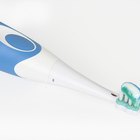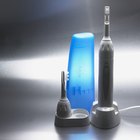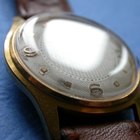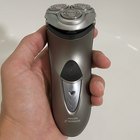The Sonicare toothbrush developed by Phillips is an electronic solution to oral health care. Millions have benefited from the rotating bristles that clean teeth, preventing tartar and plaque buildup. Several versions of the product are available, and none of them are cheap enough to just throw away when problems arrive. Some problems are as simple as recharging the batteries, while others need more attention.
Troubleshooting Frequent Problems
When there is no power to the Sonicare, recharging the batteries is the most basic troubleshooting to do. For the nonrechargeable models, changing the batteries should restore power to the toothbrush. If the product works, but seems less powerful, check the settings and the easy-start setting. If enabled, the toothbrush won’t run as powerfully as usual. Cleaning and replacing the brush head will also correct some of the power problems. Your toothbrush points out when it needs recharging. The blinking light is one sign, and a series of beeps is another. Pay attention to these signs and recharge the toothbrush for 24 hours to get a full charge. Another regular problem is a rattling head. Expect a slight hum when the toothbrush is running, but you can correct excessive rattling. Tightening the cuff is a way to fix this. The cuff is the part that holds the brush head to the handle. If it persists, replace the brush head.
Maintenance
Do regular maintenance on the toothbrush to make sure that it always runs at peak levels. These techniques can also remove any odor coming from the toothbrush. Thoroughly cleaning the toothbrush and changing the brush heads is all the maintenance that you need to do. Do cleaning procedures after every use, once a week and as needed. The daily cleaning procedure is as simple as rinsing the brush head under running water after every use. The weekly cleaning needs a more involved regimen of mild soap and a wet cloth. Remove the brush head and gently wipe the handle with mild soap to remove any buildup. Clean the cuff and the bottom of the brush head. Replace the brush head even if it doesn’t look like it doesn’t need to. Replacing this part of the toothbrush every three months ensures the toothbrush will stay in ideal working levels. A bad, or old, brush head can cause serious problems to the toothbrush down the road.
Related Articles

My Sonicare Flexcare Runs But Does Not ...

Remington Razor Troubleshooting

How to Remove the Bristle Head from a ...

How to Troubleshoot an Oral B Triumph

How to Repair a Rotadent Electric ...

How to Reset a Sonicare

How to Use the Norelco Jet Clean System

How to Replace Sonicare Brush Heads

How to Change the Battery on an Oral-B ...

How Do I Sharpen the Blades of a ...

How to Fix Your Sonicare Toothbrush if ...

The Advantages of a Wind Up Watch

How to Clean a Philips Norelco Shaver

How to Troubleshoot a Gillette® Fusion™ ...

Bulova Motion Quartz Repair

How to Reset a Polar F6 that is Locked ...

How to Start a Seiko Kinetic Watch

How to Repair a Norelco Razor

How to Troubleshoot a Citizen Skyhawk ...

How to Clean a Dirty Epilator
Writer Bio
Tiesha Whatley has been writing for over 10 years. She has been published in "Marie Claire," "Ebony" and "Modern Bride" magazines. She holds a Bachelor of Science in English from the University of Alabama at Birmingham and has been working in the wedding planning industry for over 13 years.